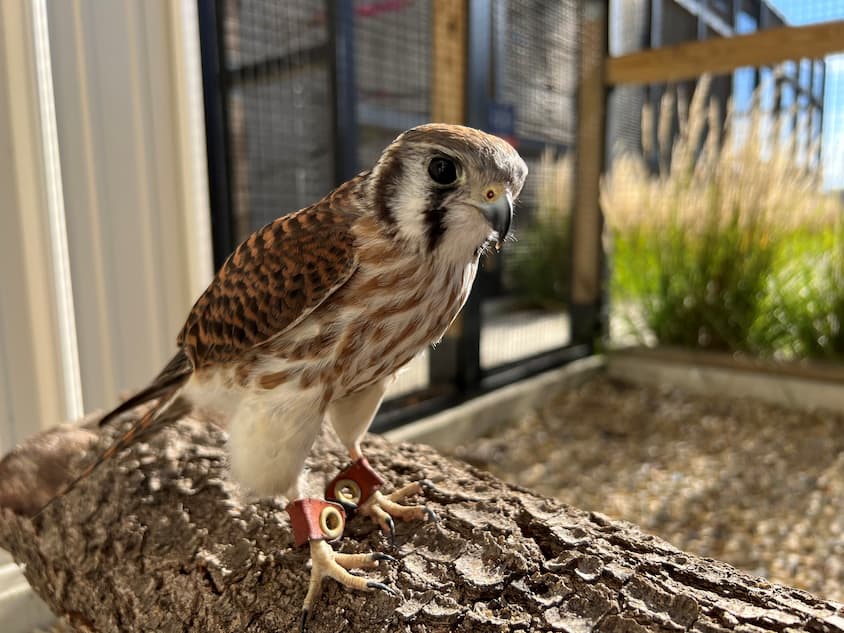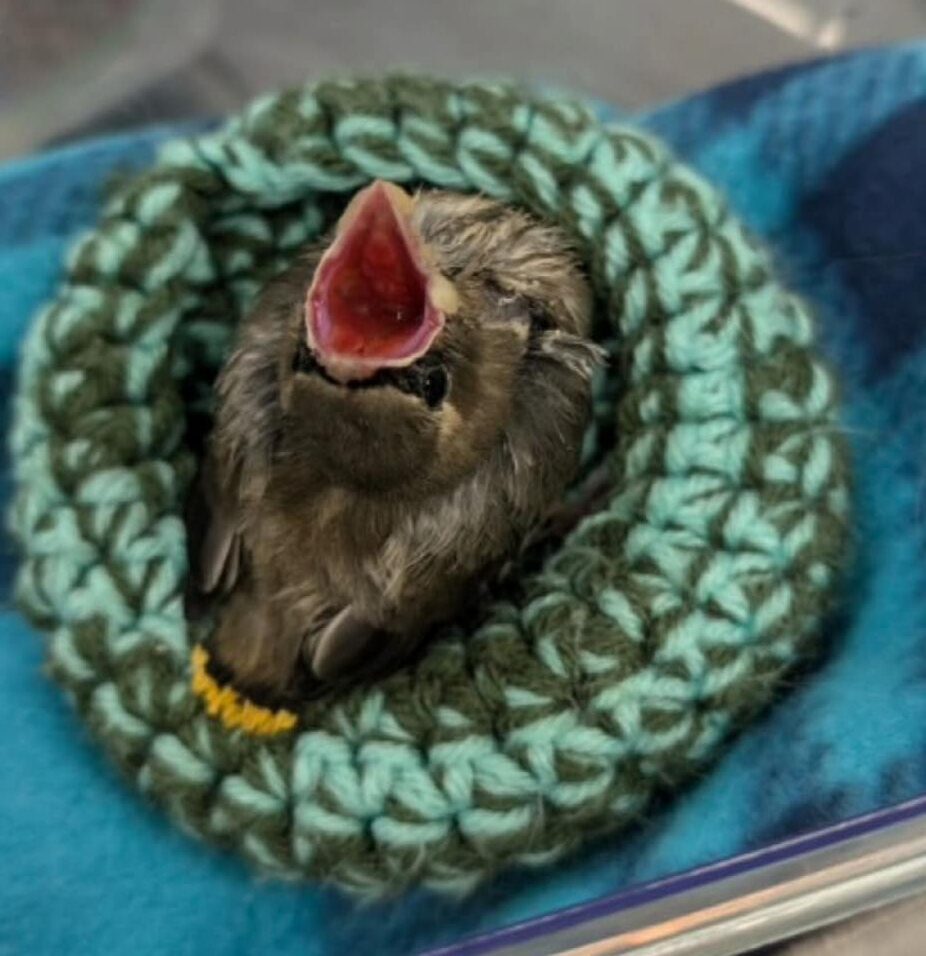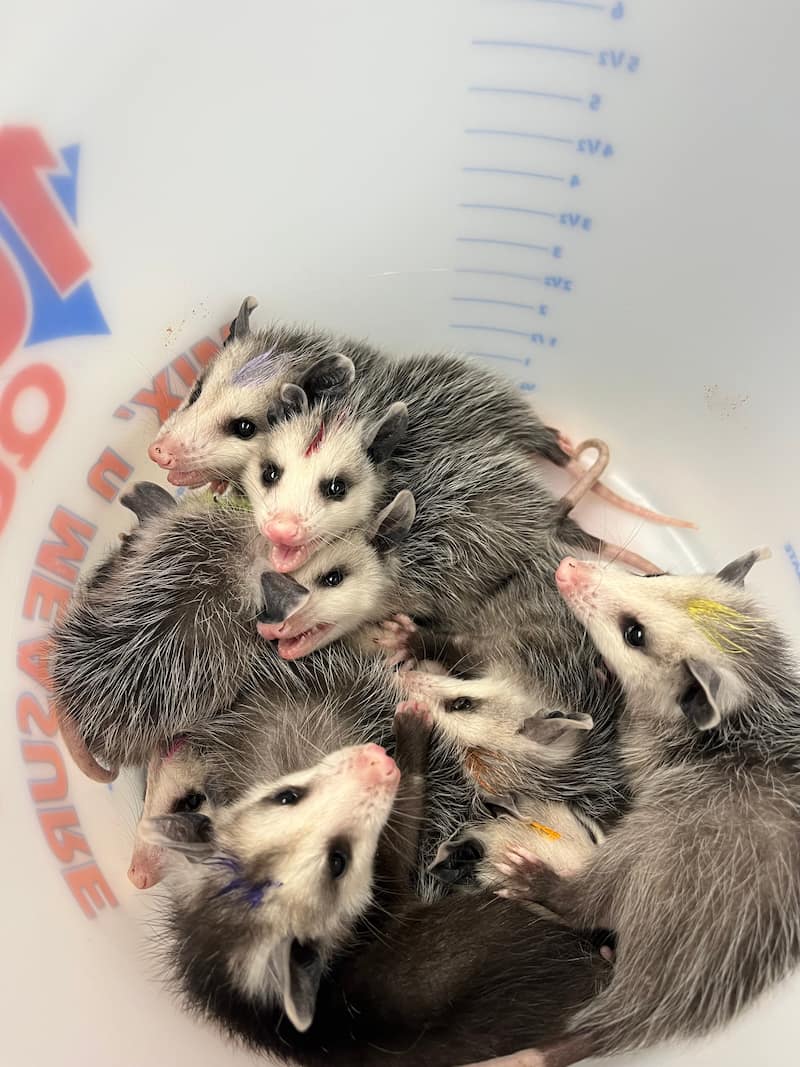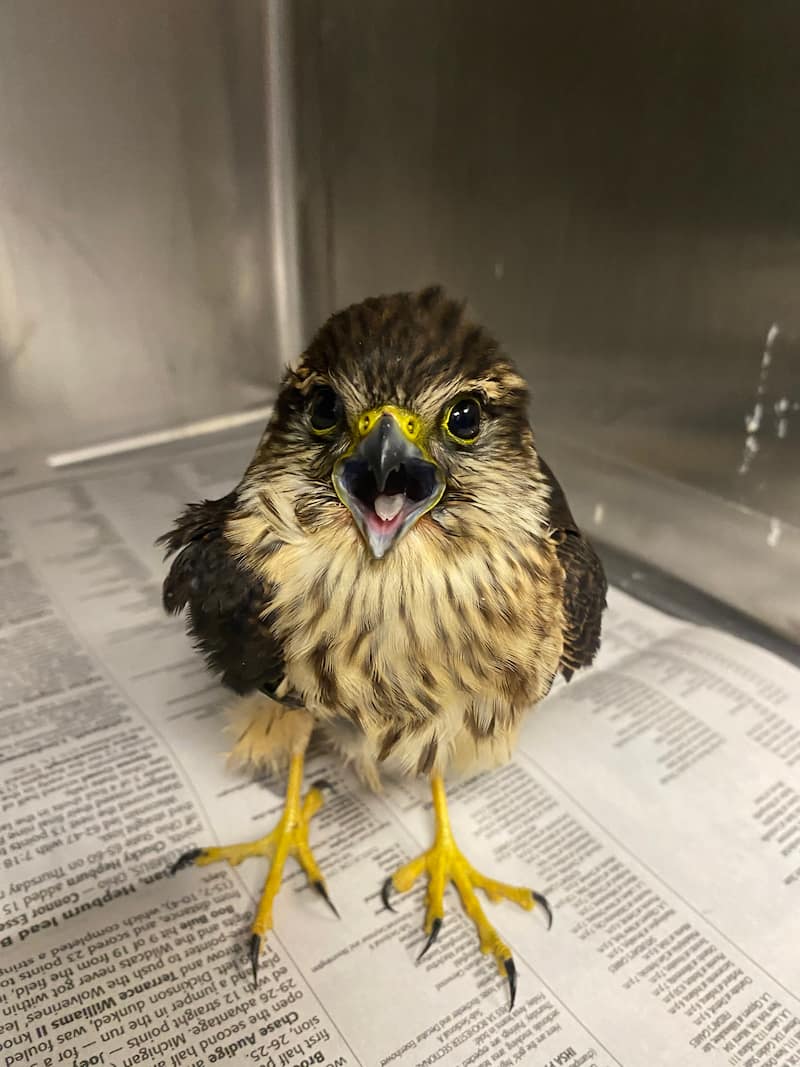The Wildlife Medical Clinic’s Ambassador Program is delighted to introduce you to our newest member – Clover the American kestrel!
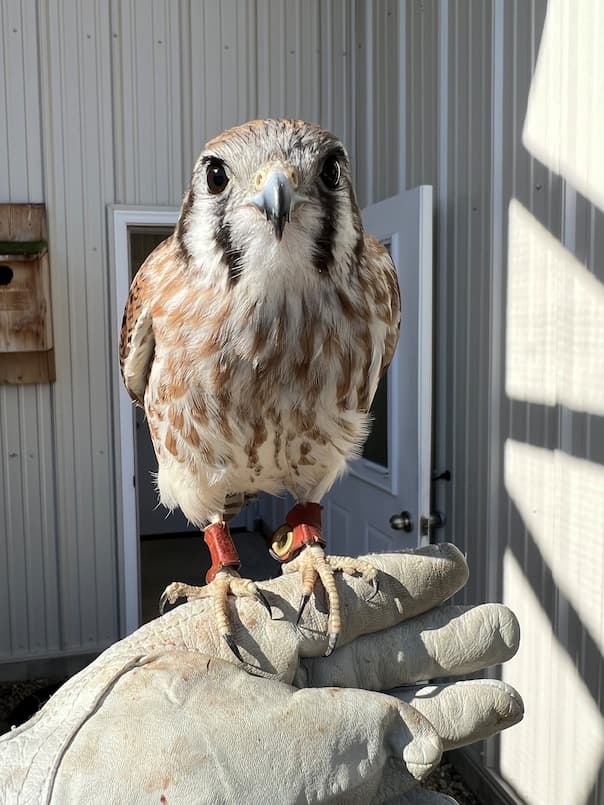
Why Clover, you ask? Well, we are very fortunate to have support from the University and surrounding area and are thrilled that a generous community member, Rich Sivicek, helped us to name her. Our previous American kestrels have had rhyming names (Pistol before Thistle). To continue with related names, since Thistle is a type of plant, another plant-themed name was selected, being Clover!
Clover was initially found in Springfield, Illinois, and brought to the Illinois Raptor Center in Decatur, Illinois, in the middle of June. She had only minor injuries but also presented with neurological symptoms. It was thought that she may have flown into a wall or window but with no improvement of her neurological symptoms after a couple weeks, IRC transferred her to the Wildlife Medical Clinic on the first of July.
At the Wildlife Medical Clinic, we assessed the same mild injuries but did not find anything out of the ordinary on radiographs, so nothing was broken or required surgical intervention. After a few days of keeping her and managing potential pain, we started to see that she did not act like a normal kestrel should. She was eager to see people and would try to run towards us when her cage was opened instead of trying to get away from us, and she was not eager to fly. This habituation to humans meant that, even when healed, she would likely not be successful in the wild.

Due to her non-releasable status, we started looking around for a permanent placement for this little kestrel. While being kept at the WMC, we started reinforcing her comfort around people so that she would be comfortable wherever she ended up. She turned out to be very food motivated – she very quickly learned to perch on a small scale for stress-free weight checks as long as there was a bite of mouse for her afterwards. We admittedly became fond of her and, after many conversations with the WMC faculty and student volunteers, it was decided that we had a place for her in our Ambassador program. Our ambassador American kestrel Thistle was getting older, and we were hoping a new kestrel would put less strain on Thistle, so she could travel to fewer off-site programs and mainly be used for on-site programs. Unfortunately, Thistle passed away before we had Clover ready for programs so we will have a few programs without a kestrel, until Clover is fully trained.
Clover has been in training for a few months now and has made great strides. She flies to select perches when we ask, steps up onto the glove, and still stands on a scale for weight checks. She also flies to the glove on command, which is not something our other Ambassador raptors do. She is beginning to become comfortable with jesses in her anklets. These cords will allow us to eventually secure her to the glove so that she will be safe and contained during programs and while on walks outside.
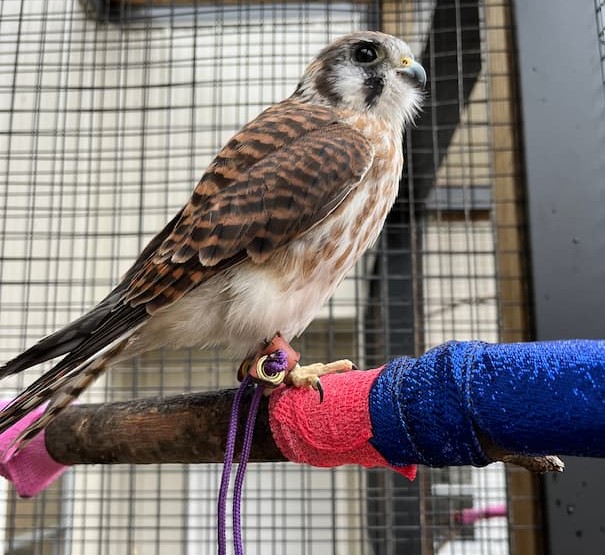
Training can be a slow process, and every bird is different, but she’s doing well so far and once we are sure she is comfortable and ready, we will start bringing her with to some of our outreach events! In the meantime, she can be seen during on-site programs or at any time by visiting the Ambassador Building, which is located behind the South Clinic. Clover loves to sit on the high beams of her outdoor enclosure, so if you don’t see her, try looking up!
Written by Sarah and Jacob, Class of 2026

